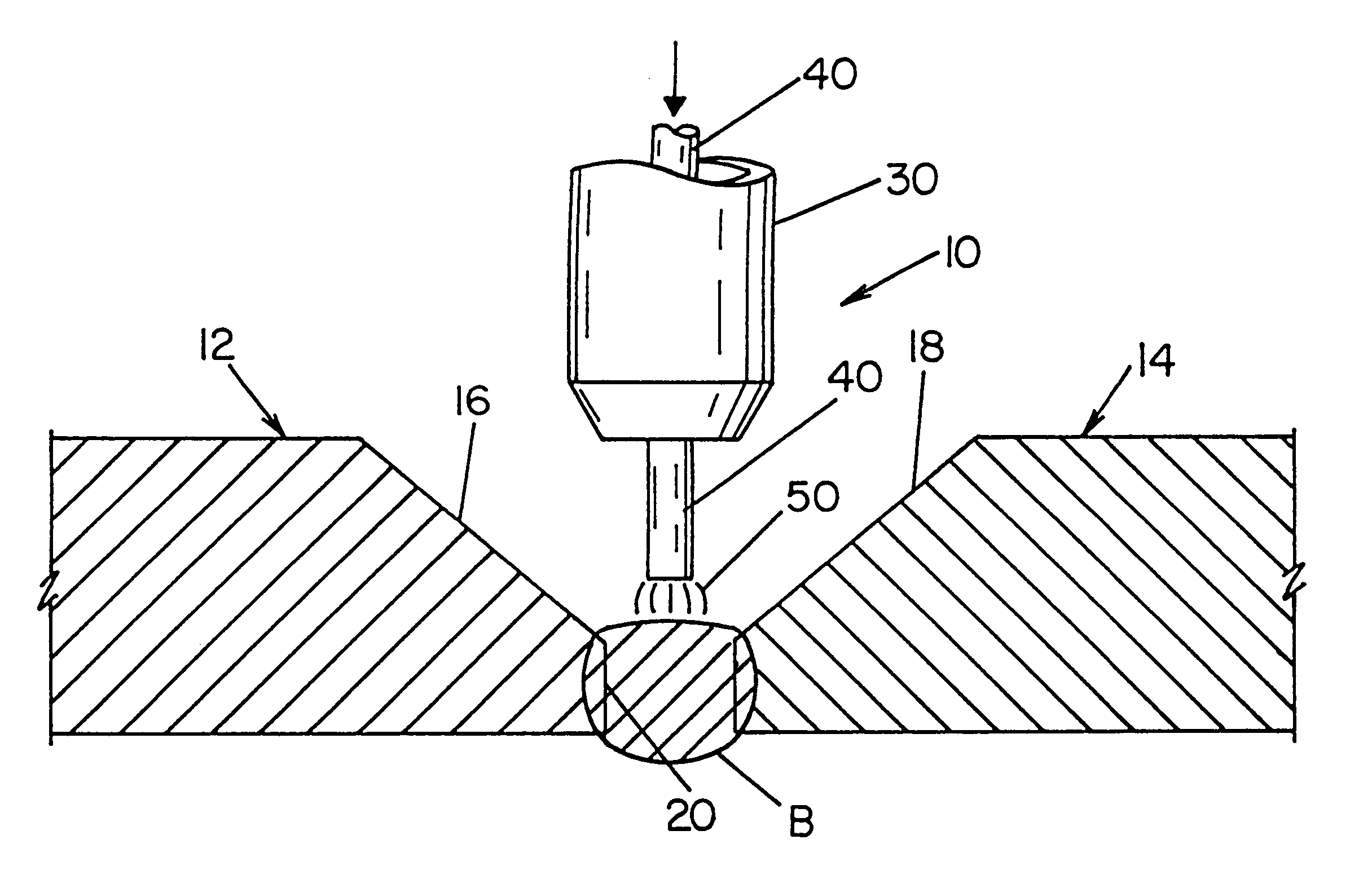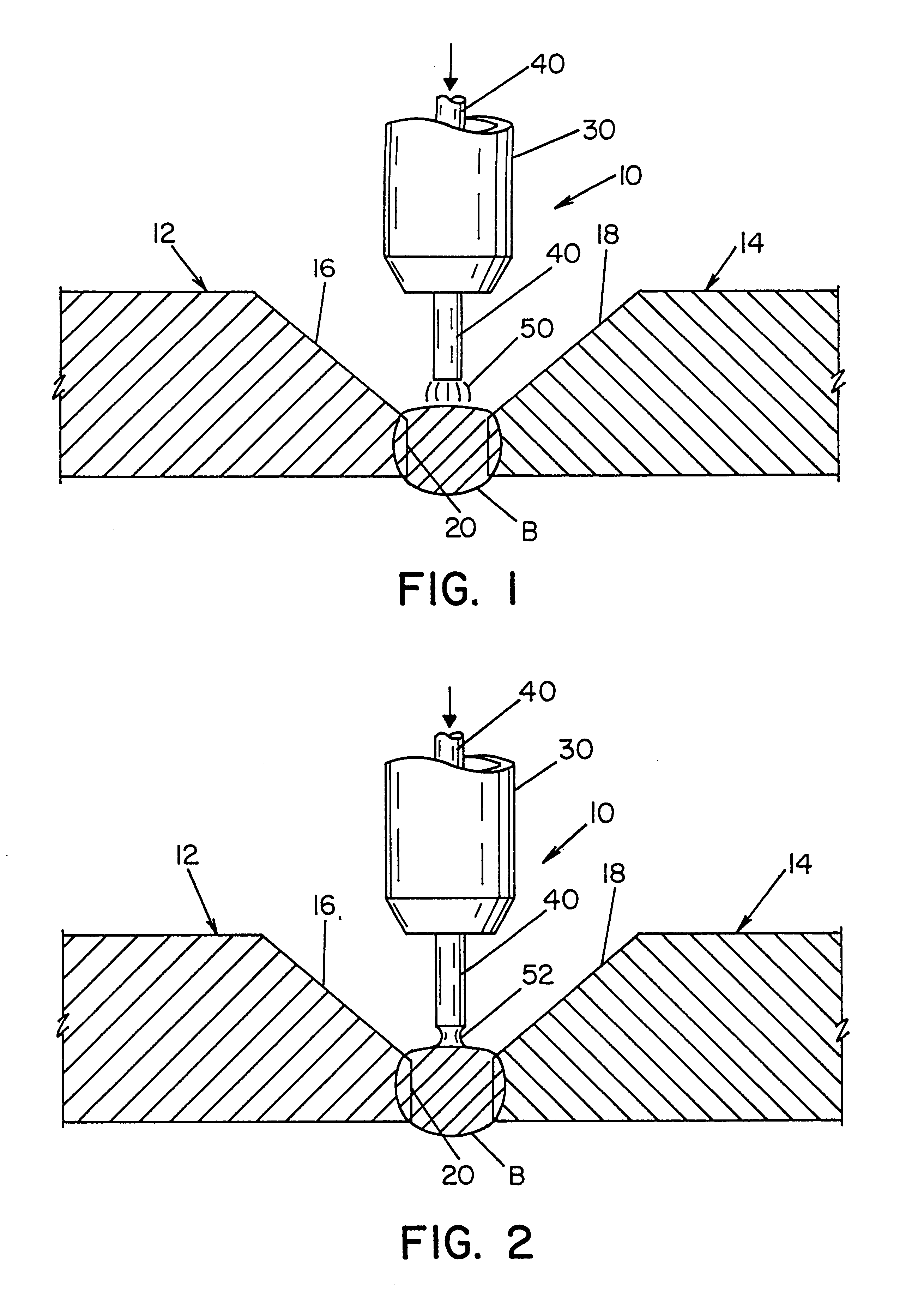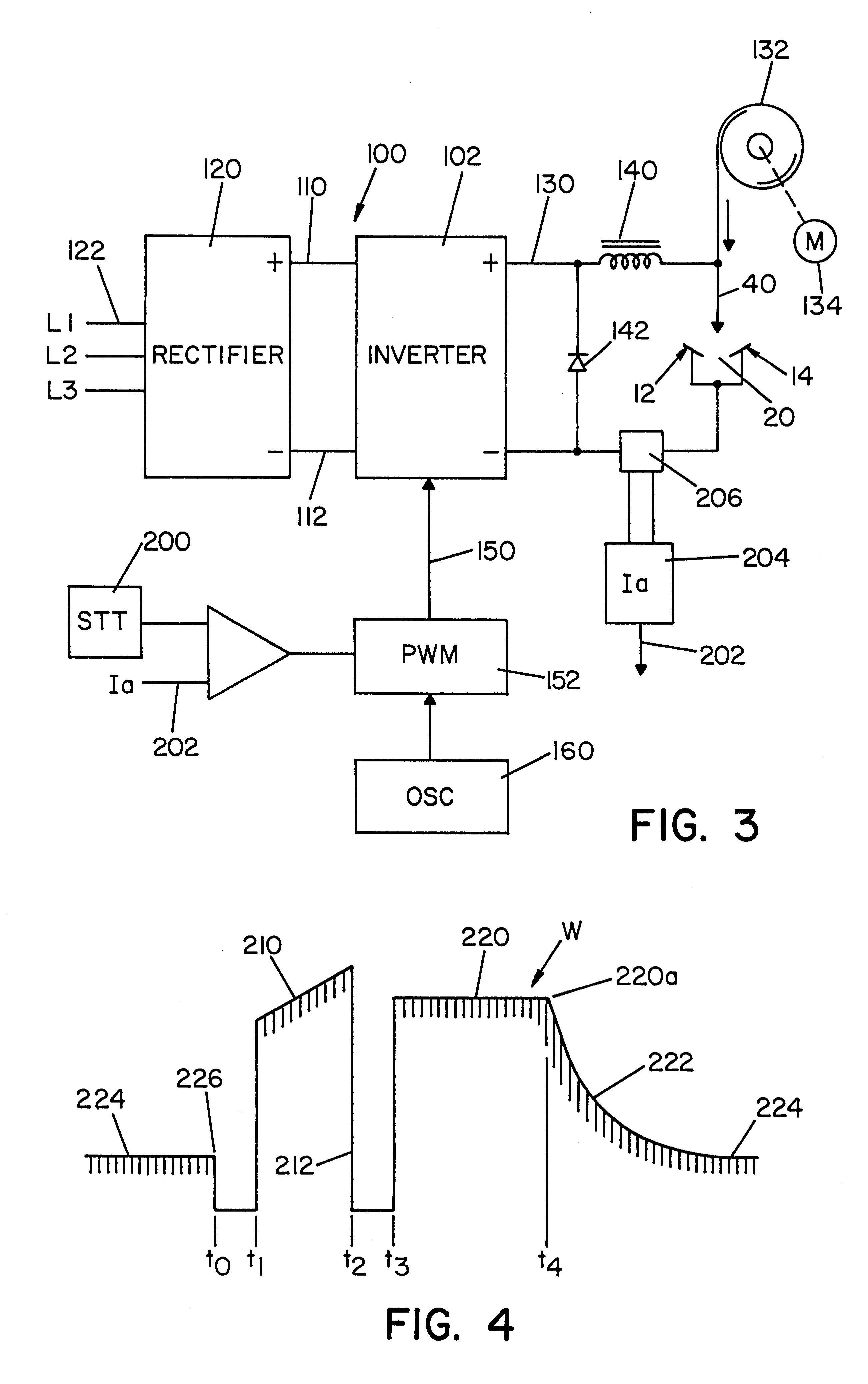Method of pipe welding
a pipe welding and pipe technology, applied in the direction of soldering equipment, instruments, manufacturing tools, etc., to achieve the effect of improving flow characteristics, excellent appearance, and high travel speed
- Summary
- Abstract
- Description
- Claims
- Application Information
AI Technical Summary
Benefits of technology
Problems solved by technology
Method used
Image
Examples
Embodiment Construction
The present invention relates to a method of welding the ends of two pipes at the open root between the ends by using a special welding wire in combination with the STT welding procedure. In FIGS. 1 and 2 the pipe welding operation 10 is used to weld the pipe sections 12, 14 having a gap or open root 20 defined by tapered ends 16, 18, which ends are spaced apart in accordance with standard practice. The invention relates to the laying or deposition of the first weld bead B in the open root 20 by moving torch 30 around the pipe sections 12, 14 while the torch follows a path determined by the joint including root pass 20 at the bottom. In accordance with the invention, a wire 40 is fed at a selected rate through torch 30 toward root pass 20 while welding current is passed through the welding wire. The welding current creates an arc 50 as shown in FIG. 1 to melt the end of the advancing wire 40. As the wire is converted to a molten ball and moved toward bead B, a short circuit conditio...
PUM
| Property | Measurement | Unit |
|---|---|---|
| weight percent | aaaaa | aaaaa |
| weight percent | aaaaa | aaaaa |
| weight percent | aaaaa | aaaaa |
Abstract
Description
Claims
Application Information
 Login to View More
Login to View More - R&D
- Intellectual Property
- Life Sciences
- Materials
- Tech Scout
- Unparalleled Data Quality
- Higher Quality Content
- 60% Fewer Hallucinations
Browse by: Latest US Patents, China's latest patents, Technical Efficacy Thesaurus, Application Domain, Technology Topic, Popular Technical Reports.
© 2025 PatSnap. All rights reserved.Legal|Privacy policy|Modern Slavery Act Transparency Statement|Sitemap|About US| Contact US: help@patsnap.com



